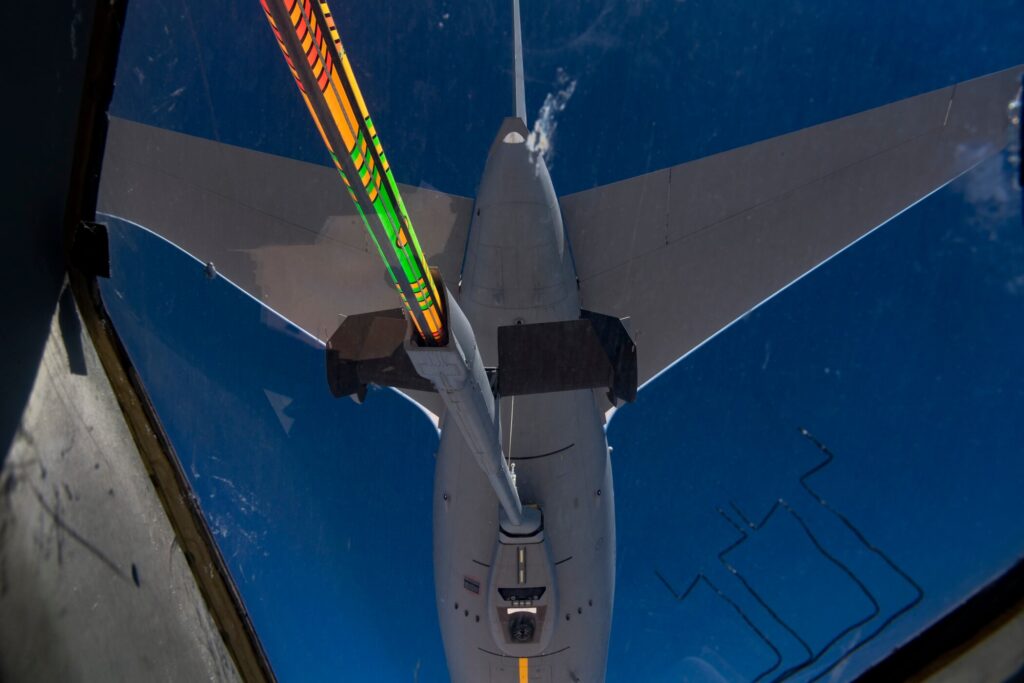The Boeing KC-46 Pegasus tanker is marred by yet another technical problem. The United States Air Force has logged a third Category I deficiency, this time reporting fuel leaks.
The issue of “excessive fuel leaks” that were discovered during a refueling test in July 2019 was upgraded to a Category I, on March 31, 2020, meaning it could cause severe damage when operating the aircraft.
“The Air Force and Boeing are working together to determine the root cause and implement corrective actions,” Air Force spokeswoman Cara Bousie said in a statement.“The KC-46 program office continues to monitor the entire KC-46 fleet and is enhancing acceptance testing of the fuel system to identify potential leaks at the factory where they can be repaired prior to delivery,” she adds.
It is yet unclear if the problem affects a specific receiver aircraft or not. As per the contract, it is now up to Boeing to find a fix for this new problem – on its own funds.
The manufacturer claimed it had fixed already seven out of the 16 planes where the issue was identified. “The KC-46 fuel system is equipped with redundant protection for fuel containment. In some cases with this issue, aircraft maintenance crews are finding fuel between the primary and secondary fuel protection barriers within the system,” Boeing told Defense News.
The latest Category I deficiency is the third reported by the USAF. Less than a month ago, General David Goldfein, Chief of Staff of the U.S. Air Force, told the Congress he would only send the KC-46A in a contested environment with highly trained crews if absolutely necessary. “We won’t use it for day-to-day operations, but it will be made available for a contingency,” Goldfein said.
Upon delivery of the first aircraft on January 10, 2019, more than a year after the due date, it came to light that the “Remote Vision System” (RVS), developed by Rockwell Collins, does not work as intended, especially under certain light conditions. The RVS is composed of several sensors and cameras that should help a boom operator during aerial refueling. But the USAF has discovered discrepancies between the motion shown by the RVS and what was happening in real life. Boeing has agreed to fix the RVS at its expense, a process that could take three to four years.
Another problem was the design of the boom itself. During aerial refueling, both the tanker and the receiving aircraft must work together to connect the nozzle of the boom to the receptacle of the aircraft. However, multiple aircraft within the USAF, including the A-10 ground attack aircraft, were found unable to generate sufficient thrust to connect. Boeing was awarded $55.5 million by the USAF to fix it.
Despite its recurring problems, the KC-46 Pegasus has received interest from Israel. On March 3, 2020, the State Department officially informed the Congress of its intention to proceed with the sale of 8 Boeing KC-46A Pegasus tankers to its ally. The sale could help reduce the stress currently affecting the USAF aerial refueling capacities.
